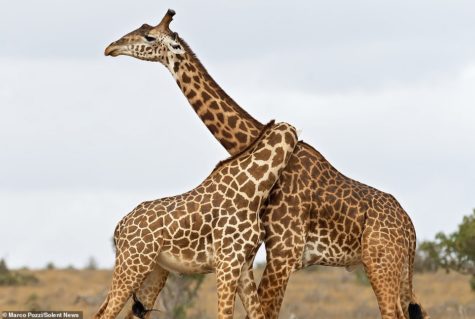Ouch, My Neck!
Have you ever looked up in awe at a giraffe? If so, you probably have seen their very long neck. Even with the large length differences, both the giraffe and people have the same number (seven) neck bones. Aside from visually seeing the neck, have you ever wondered how the giraffe acquired it? While some believe this as an act of nature, some have more complex reasoning. Well, there are several theories scientists believe contribute to the massive neck.
Theory one for the long neck is because of the fighting behaviors giraffes have. Giraffes fight by beating others with their heads and necks. This way of fighting is called necking. Male giraffes use their heavy skulls as clubs in these battles. The giraffe that wins is more likely to breed and produce offspring.
The second theory some people believe for the neck is competition for food. Since giraffes share their habitats with other shorter animals, they have to adapt. Giraffes can reach nutrients at high levels when small animals have picked over the low levels. The smaller animals can happily snack on the plants and foliage at low levels while giraffes can eat plants up high. The giraffe can eat at low levels if needed in drought cases, but they prefer eating at levels from seven-fourteen feet.
One of the last theories people think is a result of the giraffes’ long neck is an adaptation to spot predators. It can also be known as a warning system for other animals. This theory has faults because of the lack of animals with this theory. Biologists say this because they assume there would be many more animals with this adaption if it actually worked well. Another fault in this theory is the small amount of predators that a giraffe has. Other than people, lions and crocodiles are the only ones to hunt the giraffe.
Overall, I feel like the theory for food adaption is the most correct theory. Others seemed too complicated to believe. Some other theories not listed were even more odd!







Alexa Madrigal • Dec 11, 2019 at 2:41 pm
I like that you guys listed more than one theory. I think it helps give the readers some background information, it provided some facts that were interesting to me and that I didn’t know. The article was also very well written. Good job guys!
Maci Garland • Dec 11, 2019 at 9:16 am
Very nice article, I enjoyed reading about the different facts about the giraffe that I would’ve never know, I liked how you made it interesting. Great job guys, keep up the good writing!!